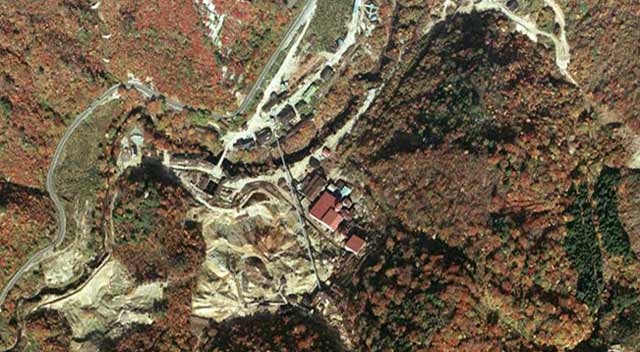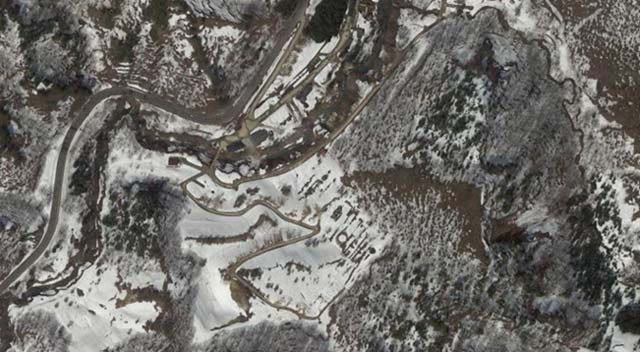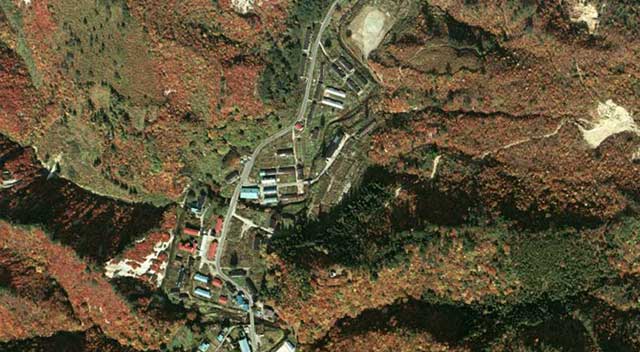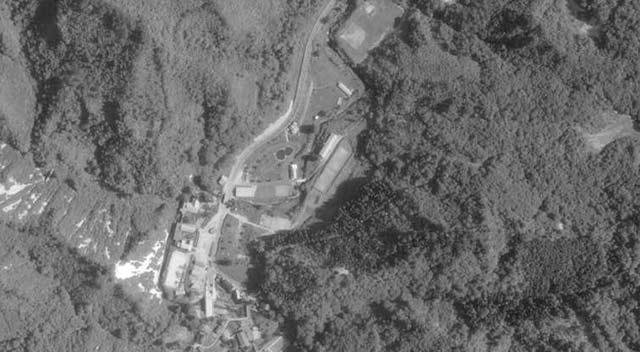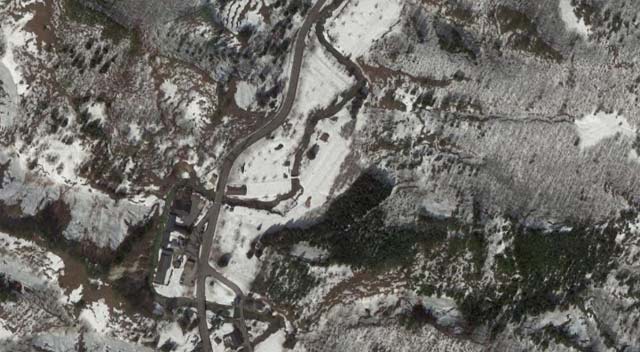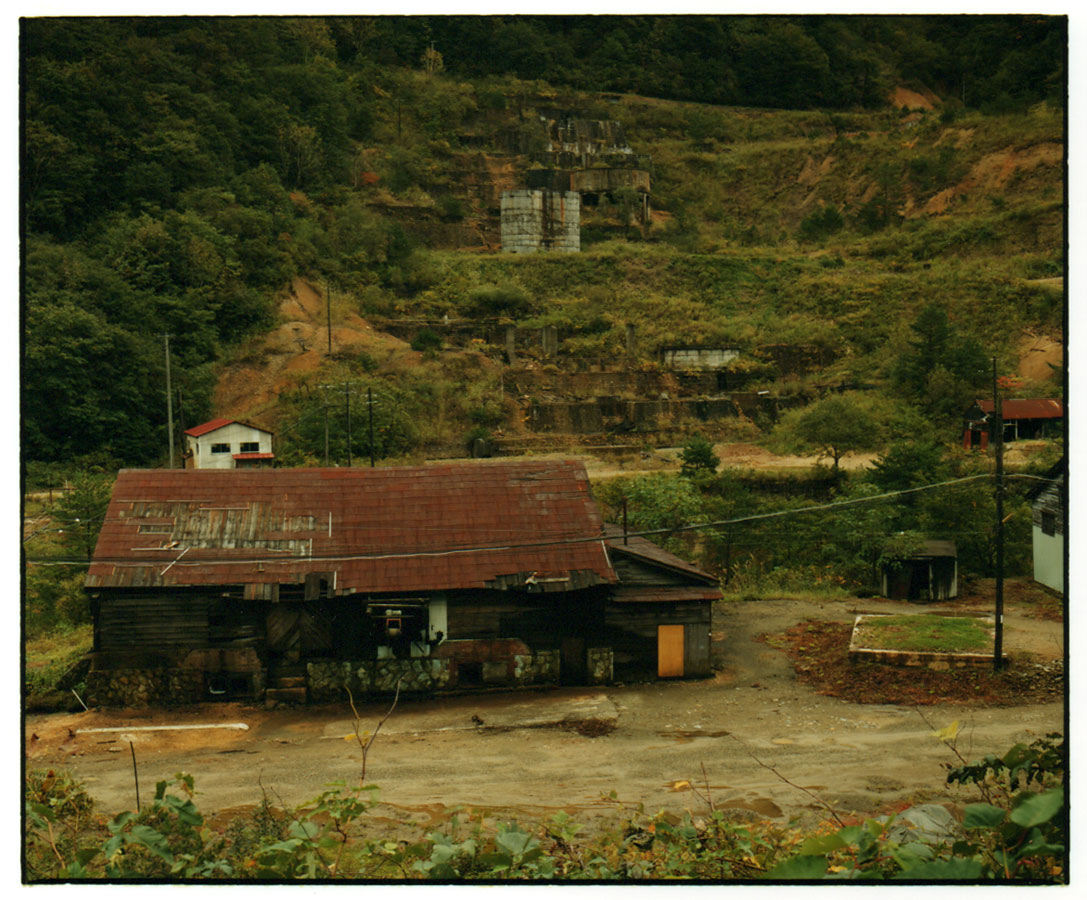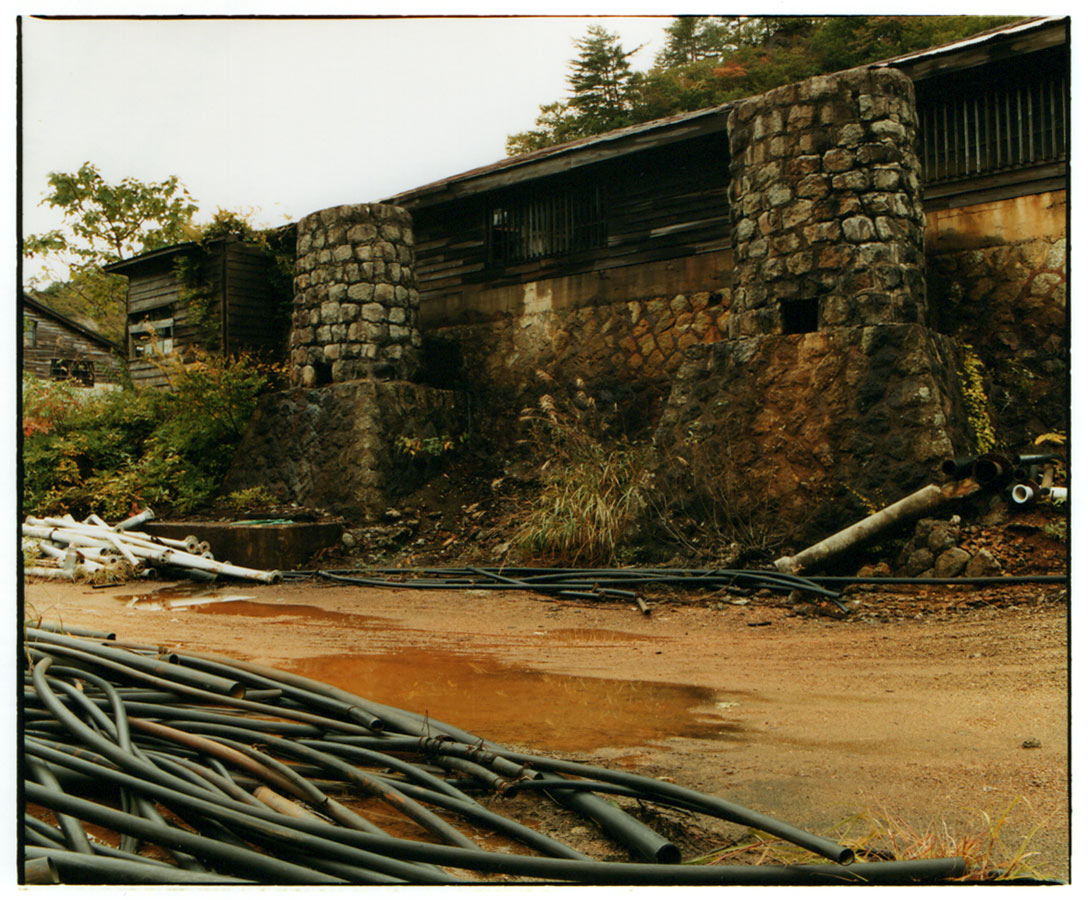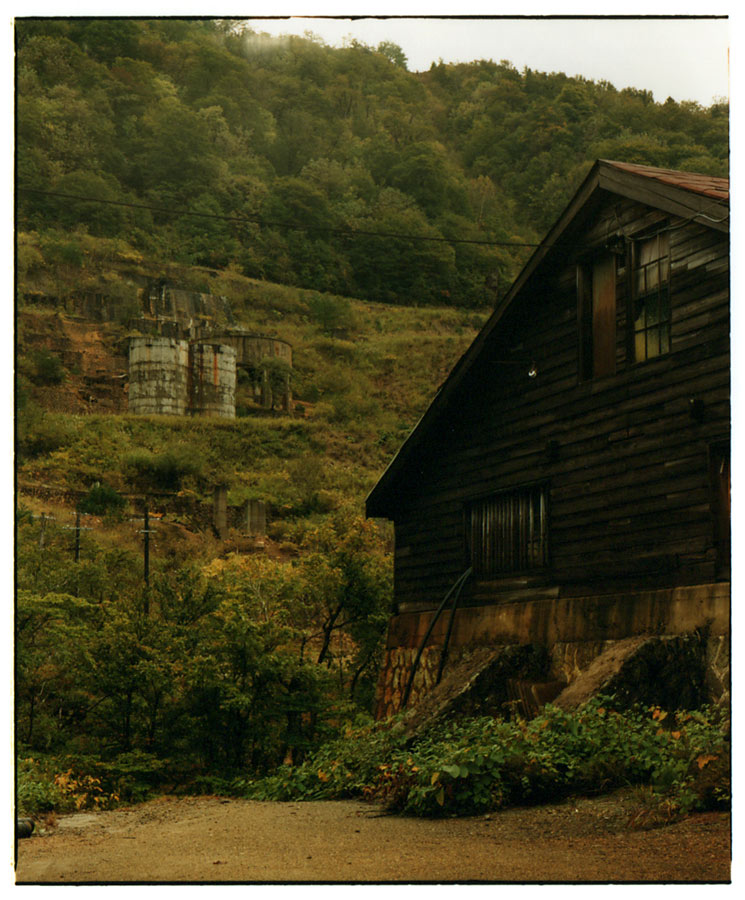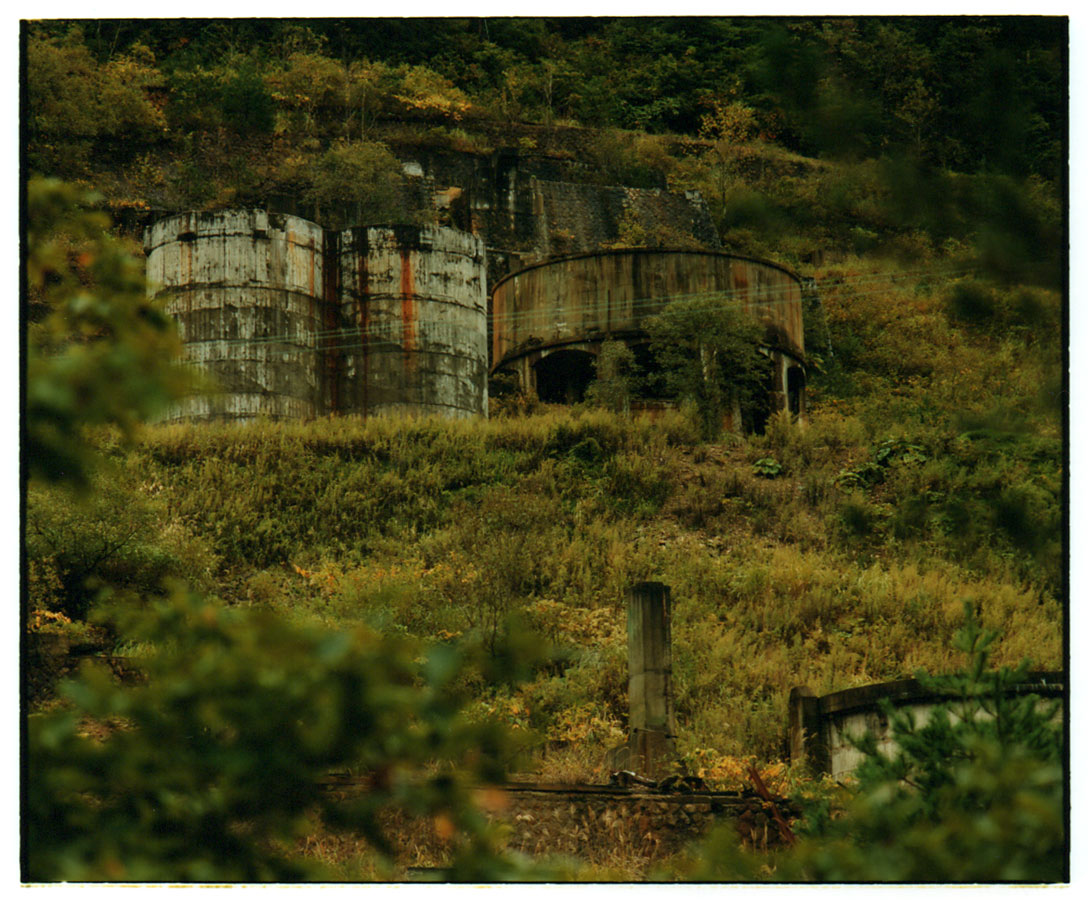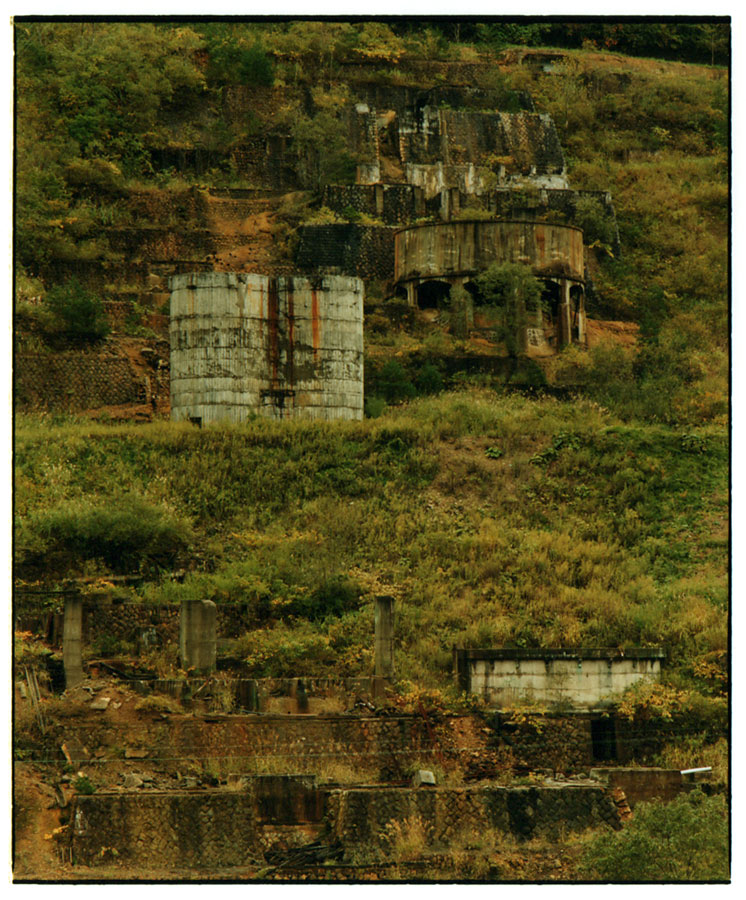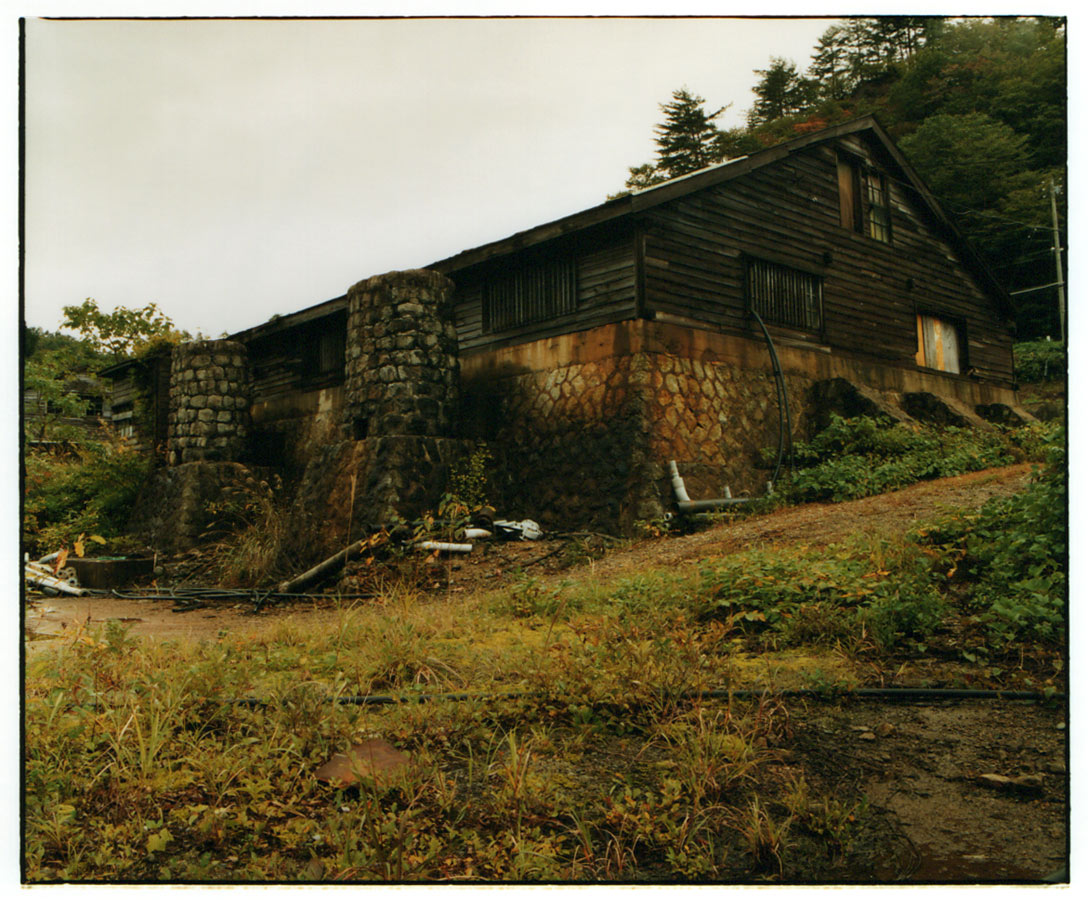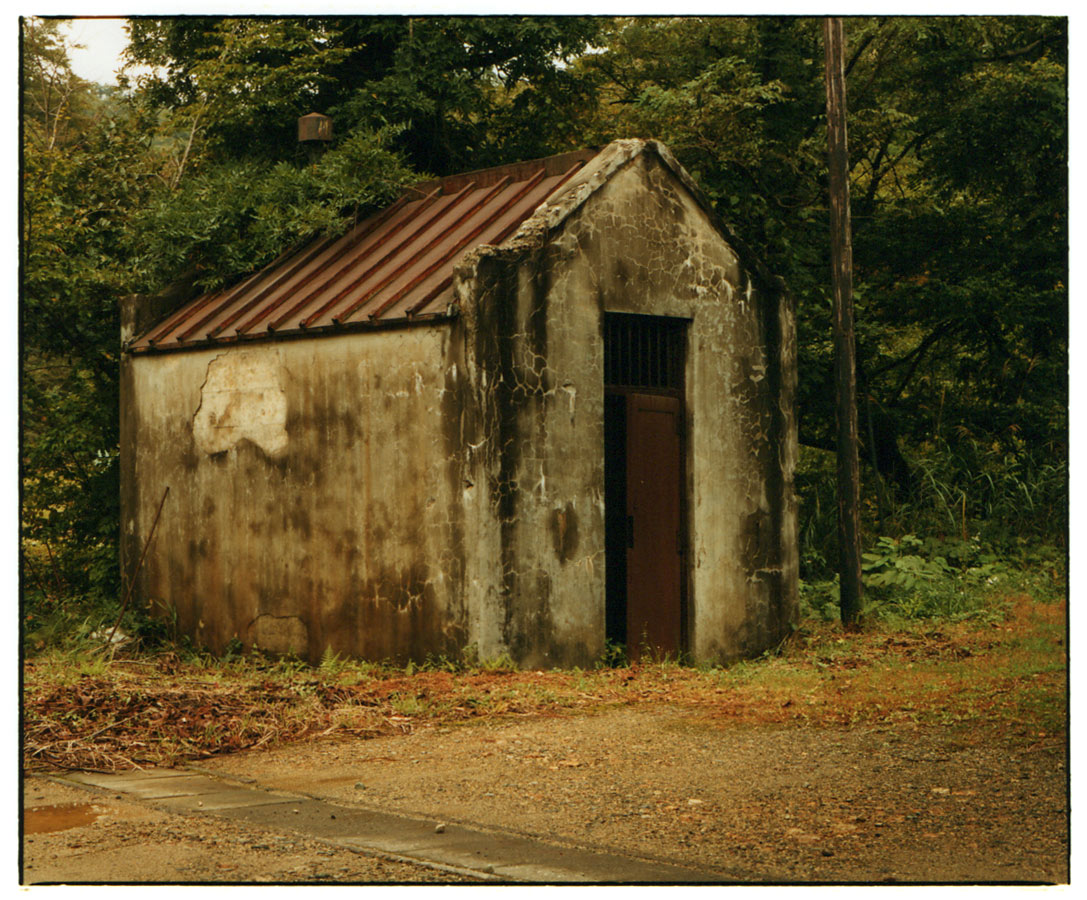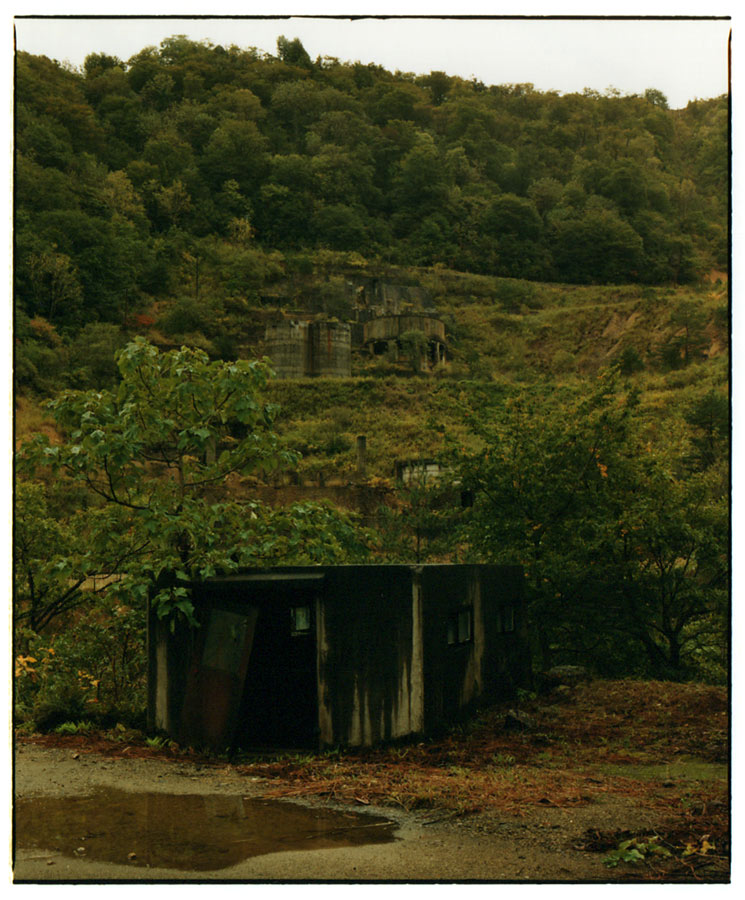土畑鉱山跡
秋田との県境を流れる小鬼ヶ瀬川の中流域に位置し、大正期から銅鉱を産出して栄えました。 1900 年(明治 33 年)に地元村民 照井岩次郎によって畑平の山中に露頭が発見され、同年に金沢町の福田久右衛門が金銀鉱の試掘を出願します。 その後、鉱業権は 1903 年(明治 36 年)に東京の実業家 濱本義顕らの手に渡り、搗鉱法と青化法を用いた製錬事業が開始されました。 3 年後に湯川金山会社が設立され、大切坑の開削とともに探鉱が進められますが、事業は成果を得られずに休止に至りました。 その後、大戦景気を受けて銅価が高騰する中、1915 年(大正 4 年)に請負稼行を始めた地元村民 高橋謙一郎が旧坑に銅鉱床を発見し、土畑鉱山と改称して売鉱を行いました。 翌年に田中鉱業(後の糸平興産)が権利を譲り受けて開発に取り組み、土畑は銅山として発展に向かうこととなります。 索道や選鉱場、発電所の設置、削岩機の導入が進められた他、1925 年(大正 14 年)に浮遊選鉱場が設けられ、生産量は飛躍的な増加をみせました。 最盛期となる 1929 年(昭和 4 年)の生産量は粗鉱 132,786 t、銅精鉱 17,407 t に上り、鉱夫数は 558 名を数えました。 さらに、1933 年(昭和 8 年)から上野々鉱床の開発が進められ、以降 5 年間の粗鉱量は 20 万 t を超えて推移しました。 終戦後、停滞した生産は翁沢鉱山の買収や採鉱法の改善、運搬設備の増強を経て回復し、昭和中期に再興を迎えました。 隣接する湯川は温泉が湧出する鉱山町として栄え、鉱員住宅や職員寮、浴場、講堂、購買所、診療所、体育館が並び、3,000 人ほどが生活を営みました。 資源の枯渇を受けて 1976 年(昭和 51 年)に閉山に至りますが、坑廃水処理とともに沈殿銅の採取が続けられ、10 年後に発足した土畑鉱山株式会社へと事業が引き継がれます。 山腹には往時の選鉱場跡が今も残ります。
1976 年閉山
Tsuchihata Mine
The mine was situated in the middle reaches of the Konigase River, which flows near the border with Akita Prefecture, and it produced copper ore from the early 20th century. In 1900, Iwajiro Terui, a local villager, discovered an outcrop at Mt. Hatabira, and Kyuemon Fukuda from Kanezawa Town applied for an exploration permit for gold and silver ores. Subsequently, Yoshiaki Hamamoto, a businessman from Tokyo, and another purchased the mining rights in 1903 and commenced gold extraction using the amalgamation and cyanidation processes. Although Yugawa Gold Mine Company was established three years later and conducted exploration in conjunction with the excavation of Ogiri Adit, operations yielded poor results and were suspended. In the early 20th century, the First World War caused a rise in demand for copper. Under such circumstances, Ken-ichiro Takahashi, a local villager, began contract mining in 1915 and discovered a copper ore deposit in old workings. Thereupon, the mine was renamed Tsuchihata Mine, and the mined ore was sold to other parties. The following year, Tanaka Mining Co., Ltd., later Itohei Corporation, acquired the mining rights and commenced mine development, which included the introduction of rock drills and the construction of aerial tramways, beneficiation plants, and a power plant. In 1925, a flotation plant was completed, which led to a significant increase in production. In the peak year of 1929, the mine produced 132,786 tonnes of crude ore and 17,407 tonnes of copper concentrate, and the number of miners totaled 558. Furthermore, the development of Uenono deposit commenced in 1933, and the annual production of crude ore exceeded 200,000 tonnes over the following five years. After the war, declining production gradually recovered due to the purchase of Okinasawa Mine, the introduction of new mining methods, and the expansion of haulage equipment. As a result, the mine's production was revived in the late 1950s. A mining town built in Yugawa, where a hot spring emerges, had a population of approximately 3,000, comprising employees and their families. The town was equipped with numerous welfare facilities, including miners' houses, dormitories, company bathhouses, a lecture hall, a shop, a clinic, and a gymnasium. Although the mine was closed due to resource depletion in 1976, wastewater treatment and the recovery of cement copper were continued. Ten years later, the operations were shifted to newly established Tsuchihata Mine Co., Ltd. The remains of the beneficiation plant still stand on the mountainside.
closure in 1976
岩手県和賀郡西和賀町
銅、硫化鉄、亜鉛、金、銀
Nishi-Waga Town, Waga District, Iwate
copper, pyrite, zinc, gold, silver
主要鉱床は名称の由来となる畑平と白土に上野々を加えた 3 鉱床からなり、鉱山事務所や選鉱場は畑平山の北麓に設けられました。 搬出拠点となる横黒線(後の北上線)陸中川尻駅との間には全長 2,909 m の馬車軌道が敷かれ、冬季の積雪に備えて全長 2,287 m の索道が架設されます。 上野々から選鉱場への送鉱には全長 1,662 m の索道が用いられましたが、合理化の一環として 1966 年(昭和 41 年)にトラック輸送に変更され、畑平では地上から選鉱場上部にかけて長さ 250 m ほどの送鉱円筒ベルトコンベアが備えられました。 また、田中鉱業は 1921 年(大正 10 年)に土畑の東に隣接する鷲之巣鉱山を買収し、後に土畑鉱山鷲之巣事業場を開設します。 1939 年(昭和 14 年)に新設された鷲之巣選鉱場では風倉、赤倉、本仁王、甲子鉱床の鉱石が処理され、精鉱は索道によって土畑に運搬された後、陸中川尻駅に送られました。
The name "Tsuchihata Mine" was derived from its ore deposits Hatabira and Shirotsuchi. In addition to these, Uenono deposit was also developed as one of the major deposits and produced copper ore. The mining office and the beneficiation plant were constructed at the northern base of Mt. Hatabira. The company constructed a horse-drawn track with a total length of 2,909 meters between Hatabira and Rikuchu-Kawajiri Station on the Okoku Line, later the Kitakami Line. In addition, aerial tramways with a total length of 2,287 meters were constructed for use during the snow season. Furthermore, an aerial tramway with a length of 1,662 meters was constructed between Uenono and the beneficiation plant to transport ore to the plant. In 1966, as part of operational streamlining, transportation from Uenono was switched from the aerial tramway to trucks, and a pipe conveyor with a length of approximately 250 meters connected the ground at Hatabira to the top of the plant. In 1921, Tanaka Mining Co. acquired Washinosu Mine, located to the east of Tsuchihata Mine, and later established Washinosu Works as a branch of the mine. Washinosu Beneficiation Plant, built in 1939, processed ore mined from Kazakura, Akakura, Honniou, and Kacchi deposits. They were transported by aerial tramways to Tsuchihata and later were sent to Rikuchu-Kawajiri Station.
The year 1976
The year 1987
The year 2014
The year 1976
The year 1987
The year 2014
